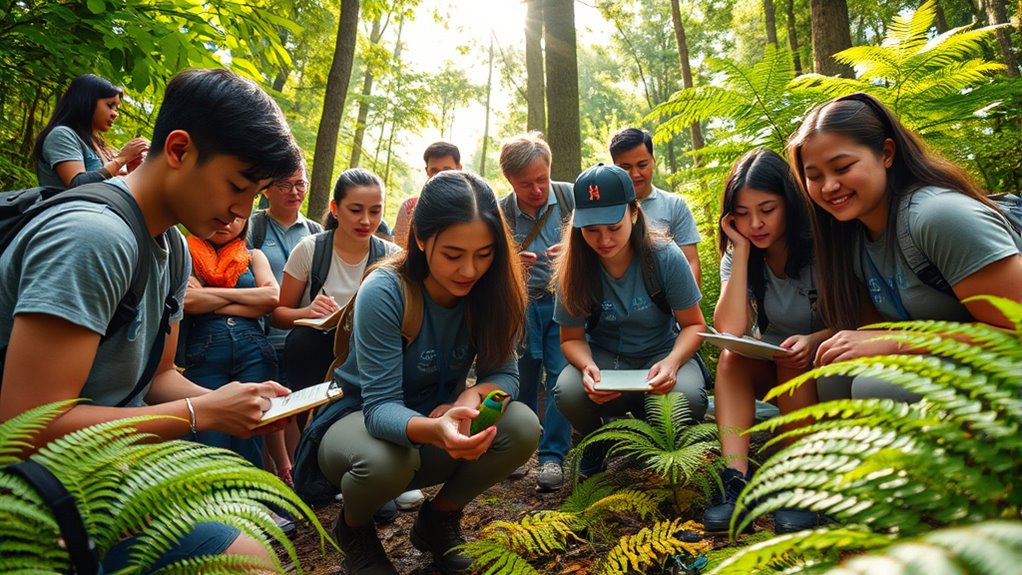Citizen science for conservation lets you actively participate in vital environmental initiatives. By volunteering, you help collect essential data that informs conservation efforts and supports local ecosystems. Digital tools like smartphones make it easy to monitor changes in real-time, ensuring your contributions are valued. Plus, engaging in these projects strengthens community ties and fosters a sense of responsibility. If you’re interested in how citizen science can enhance conservation efforts further, explore more insights ahead.
Key Takeaways
- Citizen science engages volunteers in data collection, enhancing understanding of ecosystems and informing conservation efforts.
- Real-time monitoring using smartphones allows for timely data collection and analysis of environmental changes.
- Community-based initiatives foster ownership and responsibility, improving local conservation efforts through public participation.
- Standardized protocols and AI integration ensure high-quality data collection and analysis, comparable to traditional scientific methods.
- Supportive policies and funding initiatives are essential for scaling citizen science projects and ensuring their sustainability.
The Role of Citizen Science in Environmental Protection
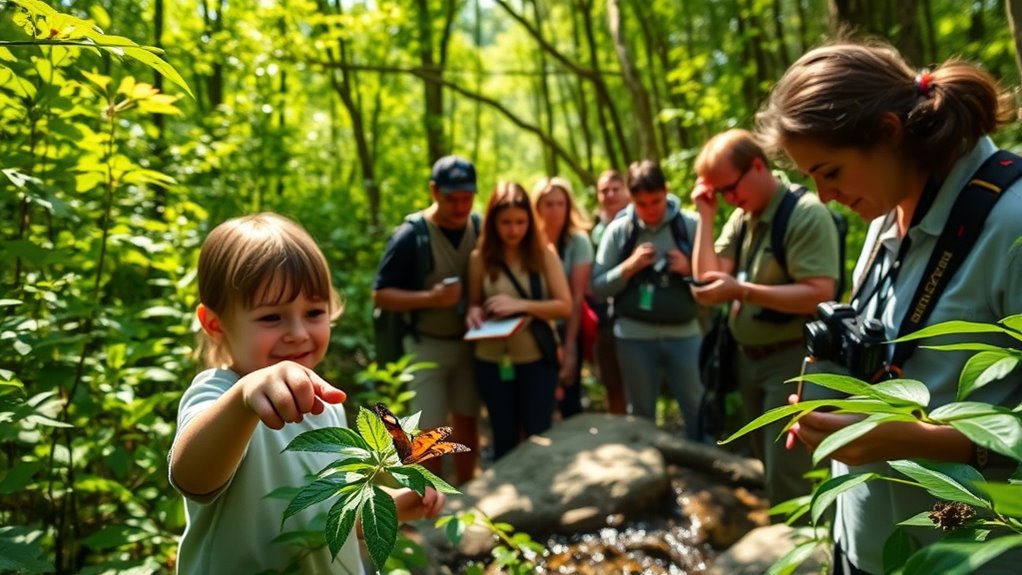
As you engage in citizen science, you play a crucial role in environmental protection by contributing to data collection and analysis that enhances our understanding of ecosystems.
By volunteering your time and effort, you help gather large-scale data that’s vital for studying climate change, species distribution, and ecosystem health. This data can also inform budget allocations for conservation efforts, ensuring resources are directed where they are needed most. Engaging in emergency preparedness not only supports conservation but also enhances community resilience in the face of environmental challenges.
Digital technologies make it easy for you to participate, ensuring data quality through proper training and project design. Your involvement broadens geographic coverage and allows for long-term monitoring of environmental changes.
This data not only enriches scientific understanding but also informs policy and management decisions, fostering community engagement in environmental issues.
Ultimately, your contributions empower local stewardship and help shape a healthier environment for everyone.
Advancements in Conservation Science Through Public Participation

Citizen science is revolutionizing conservation science by harnessing public participation to gather and analyze data in innovative ways. You can contribute to large-scale data collection through digital platforms, capturing diverse information like species distribution and habitat health. With smartphones, you can monitor environmental changes in real time, enhancing research efficiency. By engaging in projects that offer training and oversight, you ensure data quality comparable to traditional methods. Valuable data from citizen science enhances understanding of species distribution, behavior, and environmental changes. Engaging in this collaborative effort promotes small mistakes to be identified and corrected, ultimately leading to more effective conservation strategies. Furthermore, young players participating in citizen science can bring fresh perspectives and energy to conservation initiatives. Standardized protocols and AI integration further enhance analysis accuracy. Your involvement not only aids in informed decision-making but also legitimizes and increases acceptance of conservation policies. Additionally, effective dog training techniques can be adapted to engage volunteers in observing and reporting wildlife interactions. Ultimately, your participation in citizen science strengthens biodiversity conservation efforts and fosters greater transparency in environmental governance.
Enhancing Public Engagement and Awareness

Engaging the public in conservation efforts not only boosts awareness but also strengthens community ties. By participating in citizen science projects, you enhance your scientific literacy and deepen your understanding of environmental issues. The Great Backyard Bird Count is an excellent example of how citizen science can involve diverse participants in cataloging birds, contributing valuable data to researchers. Additionally, incorporating solar-powered solutions into community initiatives can further promote sustainable practices and environmental awareness.
Volunteering fosters a sense of ownership, encouraging you to take responsibility for local conservation. Legal protections vary widely when it comes to environmental laws, making community involvement even more crucial. Community-based initiatives ensure that projects resonate with local needs, promoting inclusivity and support. Digital platforms widen participation, making it easy to collect data and share findings. Youth-focused programs empower the next generation, cultivating future conservation leaders.
As you engage, you’ll notice shifts in your attitudes toward conservation, driven by newfound ecological knowledge and motivation. Together, these efforts can influence policies and promote lasting environmental stewardship within your community.
Effective Project Design and Implementation Strategies
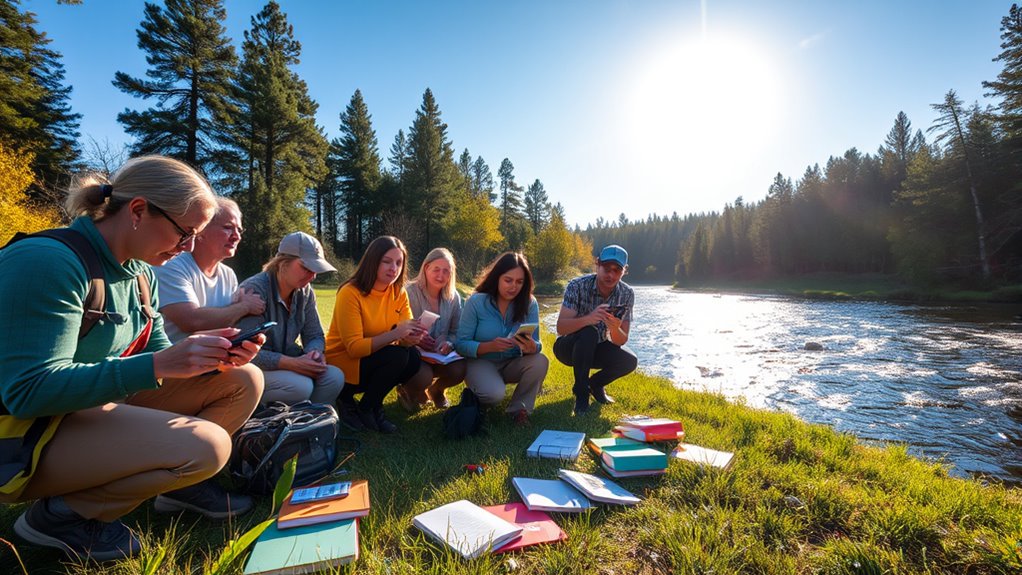
Effective project design and implementation strategies are essential for the success of citizen science initiatives in conservation. Start by setting clear project objectives that guide your design and engage volunteers effectively. Use rigorous sampling techniques to improve data quality, ensuring accurate results that support conservation efforts. Prioritize volunteer training to enhance performance and data integrity, as regularly trimming cat’s nails can minimize damage to your project’s credibility. Additionally, fostering a strong sense of community engagement can encourage participants to take ownership of the project and its outcomes. Incorporating predictive modeling techniques can also enhance the effectiveness of your project by analyzing data trends to inform decision-making.
Foster collaborations among scientists, volunteers, and community groups to tackle complex environmental challenges. Regularly evaluate your project’s impact and participant experiences to refine strategies and maintain engagement. Highlight participant activities and how to join is crucial for maintaining interest and participation in your project.
Lastly, recognize volunteers’ contributions to boost motivation and create a sense of community. By implementing these strategies, you’ll maximize the effectiveness of your citizen science project and its positive impact on conservation.
Benefits of Citizen Science to Science and Society
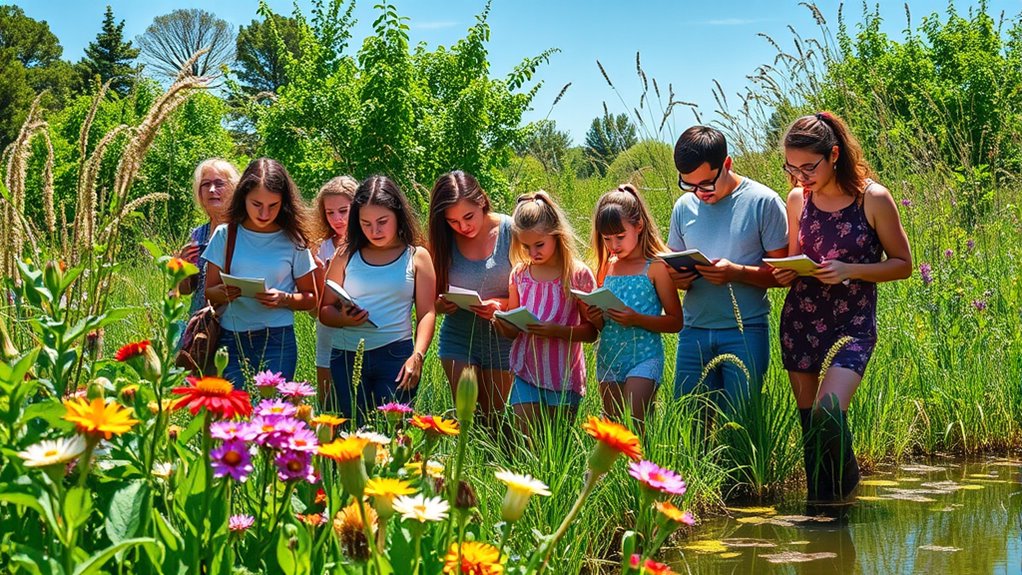
While many people see science as an exclusive field reserved for experts, citizen science opens the door for everyone to participate in meaningful research. By involving the public directly, it democratizes science and fosters collaboration between scientists and non-experts. You’ll find that your contributions, no matter your background, can enhance scientific understanding and environmental awareness. Engaging in these projects helps you connect with local ecosystems, promoting stewardship and responsibility. Citizen science also facilitates the collection of vital data, supporting research on biodiversity and pollution, and active citizen participation can influence policy decisions, giving you a voice in community-driven solutions. Additionally, participating in these initiatives can improve your mental clarity, ultimately enriching society, strengthening community ties, and enhancing your sense of purpose. Furthermore, high-quality equipment is essential for capturing accurate data, ensuring that contributions are reliable and valuable to scientific research. Through citizen science, individuals can learn about sustainable living practices, which contribute to healthier ecosystems and communities.
Addressing Challenges and Future Directions in Citizen Science
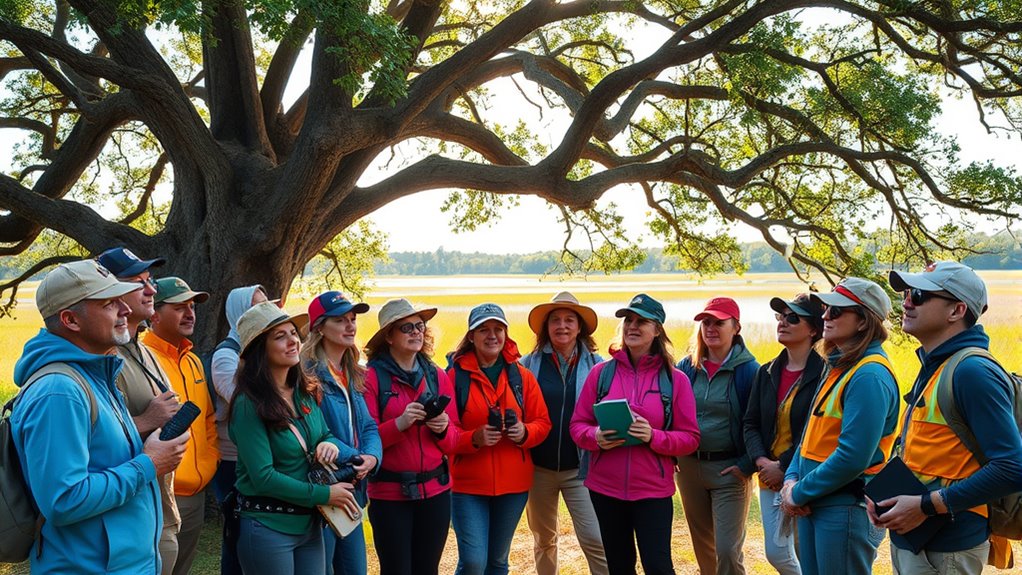
As citizen science continues to grow, it’s essential to address the challenges that come with it to ensure its effectiveness and sustainability.
You’ll often encounter data quality issues due to opportunistic collection methods. To combat this, adopting standardized protocols and integrating statistical expertise can boost reliability. Additionally, citizen science facilitates collaboration in data governance, which can enhance data quality and credibility. Recent advancements in AI-driven solutions have shown promise in improving data analysis and interpretation, further supporting citizen science initiatives. Furthermore, embracing renewable energy technologies can motivate citizen scientists to engage in conservation efforts that align with broader environmental goals. The integration of AI technologies can also streamline data collection, making it easier for participants to contribute valuable information.
Engaging diverse communities through educational programs ensures inclusivity and enhances participation. Embracing technological advancements, like AI and mobile apps, improves data collection processes.
Additionally, fostering collaboration between citizen scientists and professional researchers can mitigate skepticism and bolster credibility.
Finally, supportive policies and funding initiatives are vital for scaling citizen science efforts globally.
Frequently Asked Questions
How Can I Start Participating in a Citizen Science Project?
To start participating in a citizen science project, first explore platforms like SciStarter to find projects that interest you.
Consider your location, skills, and time commitment. Once you’ve found a project, read the guidelines and join the community.
You’ll often get training or resources to help you contribute effectively.
Whether you’re collecting data or classifying observations, your involvement can make a real difference in scientific research and community engagement.
Are There Age Restrictions for Participating in Citizen Science?
There aren’t strict age restrictions for participating in citizen science projects.
Anyone, regardless of age, can get involved, as long as they’ve the necessary tools, like a smartphone or computer.
However, if you’re under a certain age, you might need parental consent, depending on your country’s laws.
This makes it accessible for everyone, allowing you to contribute to scientific discovery and learn valuable skills along the way.
What Types of Skills Are Needed for Citizen Science Participation?
Participating in citizen science is like joining a treasure hunt for knowledge!
You’ll need basic observation skills to collect and record data effectively. Familiarity with technology is essential, as you’ll use apps and GPS for navigation. Having a curious mind and a willingness to learn about species and ecosystems will enhance your experience.
Plus, good communication and teamwork skills will help you collaborate successfully with fellow volunteers and scientists on your journey.
How Is Citizen Science Funded and Supported?
Citizen science is funded and supported through various avenues. You can find grants from federal programs like NASA’s ROSES and the National Science Foundation, or local organizations and private foundations that back smaller projects.
Resources like Grants.gov help you discover available funding. Additionally, federal websites offer toolkits to guide you in project planning.
Engaging with community initiatives can also connect you to state agencies and corporate programs that support participatory science.
Can Citizen Science Projects Lead to Formal Job Opportunities in Conservation?
Absolutely, citizen science projects can lead to formal job opportunities in conservation.
You’ll gain valuable skills, build your resume, and expand your network. Engaging in these projects enhances your understanding of data collection, analysis, and research design, making you a strong candidate for various roles.
Plus, you might connect with professionals who can recommend you for internships or positions, paving your way to a fulfilling career in conservation.
Conclusion
In conclusion, citizen science empowers you to protect the environment, enriches conservation efforts, and fosters community engagement. By participating, you contribute valuable data, raise awareness, and inspire change. Together, we can tackle challenges, innovate solutions, and drive future advancements in conservation science. So, embrace the opportunity, share your passion, and join the movement. With your involvement, we can create a healthier planet for all, ensuring that every voice matters and every action counts.
